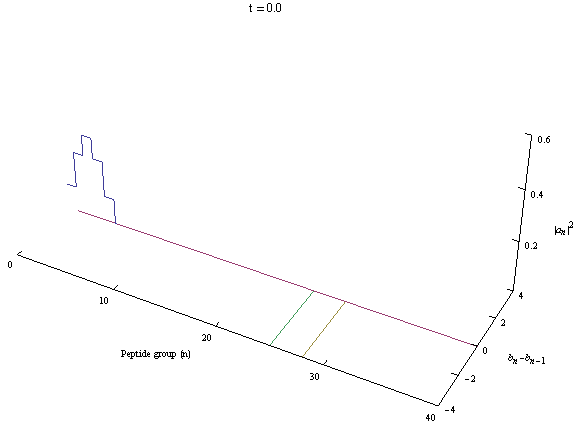Quantum tunneling of Davydov solitons
- Details
- Category: News
- Published on Thursday, 03 February 2022 22:00
- Written by Danko Georgiev
- Hits: 2035
Proteins are the molecular nano-engines that support essential life activities. Functional protein complexes can be clamped in an inactive meta-stable state that is activated by signaling cascades triggering the release of the inhibitory clamp. Protein clamps provide the cell with effective mechanisms for sensing of environmental changes and triggering biologically useful adaptations that maintain homeostasis. A general physical mechanism that underlies protein clamping action, however, has not been identified so far.
In our recent article published in Chaos, Solitons and Fractals, we explored the Davydov model for quantum transport of amide I energy, which is self-trapped in soliton states that propagate along the protein α-helix spines and preserve their shape upon reflection from the α-helix ends. We studied computationally whether the Davydov solitons are able to reflect from massive barriers that model the presence of external protein clamps acting on a portion of the α-helix, and characterized the range of barrier conditions for which the Davydov solitons are capable of tunneling through the barrier. The simulations showed that the variability of amino acid masses in proteins has a negligible effect on Davydov soliton dynamics, but a massive barrier that is a hundred times the mass of a single amino acid presents an obstacle for the soliton propagation. The greater width of Davydov solitons stabilizes the soliton upon reflection from such a massive barrier and increases the probability of tunneling through it, whereas the greater isotropy of the exciton-lattice coupling suppresses the tunneling efficiency by increasing the interaction time between the Davydov soliton and the barrier, thereby prolonging the tunneling time through the barrier and enhancing the probability for reflection from the latter. The results as presented, demonstrate the feasibility of Davydov solitons reflecting from or tunneling through massive barriers, and suggest a general physical mechanism underlying the action of protein clamps through local enhancement of an effective protein α-helix mass.





